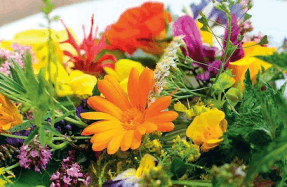This week it’s: Winter heathers


HEATHERS are ideal low-maintenance plants. They’re evergreen, easy to grow, small and manageable, and long flowering. However, since the height of their popularity in the late 1960s and 1970s – when they became associated with dwarf conifers – their image has suffered and, really, I don’t know why.
Right now, of course, the winterflowering varieties are about to come into their own – brightening up low beds, the fronts of borders and containers everywhere. They also have another great attribute: they are bee-friendly plants. They are a lifeline for the few solitary bees and bumblebees (which do not store food) that are flying around during mild spells in winter and early spring. Let’s take a sideways look at winter heathers.
Erica carnea: the acid test
I WOULD like to bust two myths. First, ericas are not heathers! They are ‘heaths’. The calluna is the true heather (also known as ‘ling’). However, over the years the distinction has become blurred, and you get both types growing in ‘heather gardens’.
The ‘winter. In the wild it grows in conifer woodlands on the mountain slopes of central, eastern and southern Europe. It is a fine winter-flowering plant, with more than 100 cultivars (although not all are easy to find).
You’re reading a preview, subscribe to read more.
Start your free 30 days



